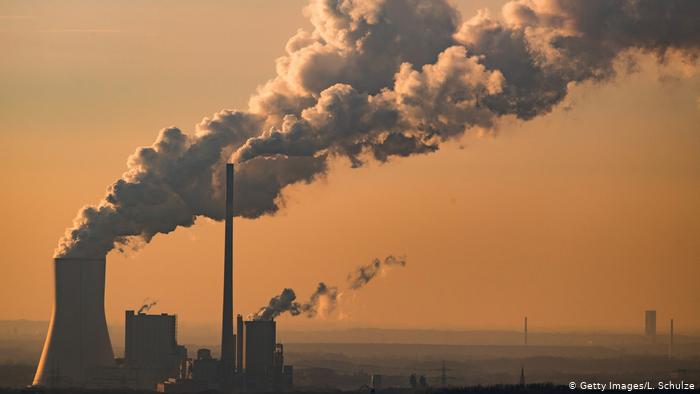by Lamiya Gulamhusein
In 2009, U.S. Representatives Henry Waxman and Edward Markey authored the Waxman-Markey Bill, also known as the American Clean Energy and Security Act. It proposed a cap and trade scheme to reduce greenhouse gas emissions by 83% from 2005 levels by 2050, marking the first time the U.S. government would have regulated greenhouse gas emissions.
However, the bill’s lifespan was cut short in 2010: it failed to pass the Senate and did not become law. In a recent study focusing on the bill, environmental economists Dr. Kyle Meng and Dr. Ashwin Rode found that lobbying by special interest groups played a significant role in lowering the chances of it being passed.
They calculated that the probability of the bill passing dropped by “13 percentage points, representing an expected social cost of $60 billion.” Lobbying greatly affected the outcome of this policy, and it continues to influence environmental policy today.
The Rise of Anti-Climate Lobby Groups
Lobbying is a method of legally attempting to persuade the decisions and policies of government officials to favor the interests of the special interest group. Major oil and gas companies have spent millions of dollars lobbying against climate policy that would limit the production and use of fossil fuels, as well as backing campaigns that generated doubt surrounding the legitimacy of the climate crisis. A Greenpeace investigation found that from 1998 to 2014, ExxonMobil funded 69 different organizations, foundations, and institutions that spread disinformation regarding climate change.
While companies like ExxonMobil sought to persuade the public that climate change was not a significant threat, many scientists at the time stated otherwise.
In a 1968 report, Stanford Research Institute (SRI) scientists Elmer Robinson and R.C. Robbins predicted the irreversible damage of ongoing fossil fuel consumption. It stated that “although there are other possible sources for the additional carbon dioxide, now being observed in the atmosphere, none seems to fit the presently observed situation as well as the fossil fuel emanation theory…carbon dioxide and submicron particles may be the cause of serious worldwide environmental changes.”
The report was prepared for the American Petroleum Institute (API), which represents over 600 petroleum corporations and remains the fossil fuel industry’s largest and most influential trade group today. The publication of the SRI report means that as early as the 1960s, members of the fossil fuel industry were aware of the drastic harm their products could cause. Despite this, many oil and gas magnates continued to lobby and fund campaigns against climate data, labeling the urgent call for more sustainable forms of energy as “alarmist.”
Today, it is becoming increasingly difficult to deny the environmental degradation caused by fossil fuel production. Growing public concern, coupled with more stringent environmental policy, has led to greater efforts to introduce policies aimed at reducing carbon emissions.
Transformation in Transportation: Are Biofuels the Answer?
While gasoline remains the most commonly used fuel in vehicles in the U.S., there is much focus on introducing policies that would “green” the transportation industry.
“The low carbon fuel standard (LCFS) requires oil and fuel providers to reduce the carbon content of their fuels,” said Ethan Elkind, the director of the climate program at the UC Berkeley Center for Law, Energy & the Environment. “In California, we’ve largely been doing that through biofuels.”
Biofuels are derived from organic matter, such as plants, algal matter, or animal waste. The heat produced from burning the matter is used to run power plant generators that produce electricity. Since biofuel sources can be replenished, as opposed to nonrenewable sources like oil and gas, they are considered to be a source of renewable energy.
However, there is some controversy surrounding their use: an increasing number of studies find that depending on the type produced, biofuels can also be harmful to the planet. One study found that the need to clear land to make space for crop-based biofuels would create 17 to 420 times more carbon dioxide than the use of biofuels would be able to displace.
But other biofuels, including those produced from waste biomass, were found to have few negative effects. Due to these statistics, many argue that in comparison to petroleum-derived fuels, biofuels can be a productive alternative.
Liquid biofuels are also becoming a more popular alternative in transportation policies. In 2005, Congress passed the Energy Policy Act, which authorized the Renewable Fuel Standard (RFS).
The RFS is a program designed to reduce greenhouse gas emissions nationally. Because biofuels can be combined with petroleum to power a traditional vehicle, the act “mandates that U.S. transportation fuels contain a minimum volume of biofuel.” This minimum volume increases every year in order to prompt the phasing out of traditional gasoline.
According to Elkind, oil and gas companies often do make investments into renewable fuels in response to such policies. Likely due to policies such as the LCFS and the RFS, ExxonMobil partnered with MIT researchers and Synthetic Genomics, Inc. (SGI) to publish a 2012 research paper analyzing the energy production of algal biofuels. Upon finding that these biofuels have sufficient energy potential, the company announced its intention to produce 10,000 barrels of algae biofuels a day by 2025 as part of its pledge to be more environmentally conscious.
Royal Dutch Shell made similar environmentally-focused claims in their 2019 annual report, stating that they expect to invest “on average $1-2 billion a year until 2020 in different services and products from a range of cleaner sources… Between 2021 and 2025, our investments in power could grow to $2-3 billion a year on average.” Earlier that year, Shell publicly withdrew from the American Fuel and Petrochemical Manufacturers lobby, citing they did not want to support an organization that undermines the 2015 Paris Agreement.
Whether these efforts will significantly reduce emissions remains to be seen.
“There’s legitimate business inquiries and investments to try to see what’s going on [with renewable fuels],” Elkind said. “[On the other hand], there’s this kind of middle ground of ‘well, policy is basically requiring us to do it, so we’ll kind of do the bare minimum.’”
Talking Green, But Walking Brown
Despite these investments into renewable energy like biofuels, the vast majority of investments made by ExxonMobil and Shell, as well as others in the industry, are in polluting products. ExxonMobil produces on average 2.28 million barrels of oil a day globally, overshadowing the company’s investments into renewable energy.
In 2019 alone, along with the world’s other three largest publicly owned oil and gas companies — BP, Chevron, and Total — ExxonMobil and Shell spent approximately $200 million dollars on lobbying against climate-motivated policy. Contrary to Shell’s publicly pro-climate stance, a joint Unearthed and Huffington Post investigation revealed that Shell remains an active member of at least eight trade organizations that lobby against climate mitigation actions in the U.S. These trade organizations include the API, which released an article calling the Renewable Fuel Standard “a broken and outdated policy.”
Part of this lobbying is fighting against attempts to restrict fossil fuel production or add taxes to fossil fuel sales. In 2019, InsideClimate News reported that BP spent $13 million on advertisements and lobbying campaigns to prevent the adoption of a carbon tax, which would have placed a fee on the burning of carbon-based fuels in the state of Washington.

Since then, BP has publicly supported other forms of carbon pricing, such as the implementation of cap and trade policies. Despite previously rejecting the carbon tax, BP stated in January 2020 that it “strongly supports” Washington state’s Senate Bill 5981, which would place a cap on greenhouse gas emissions.
To explain BP’s behavior, Elkind noted that cap and trade policies often allow for a lot more flexibility. Oil and gas companies often advocate for cap and trade as a compromise policy.
“So in other words, you’ll see [companies] sort of back what looks like climate-friendly policies,” said Elkind. “However, that’s really a fallback position when they’re more worried about a more stringent alternative passing.”
The Move From Fossil Fuels to Renewables
Petroleum represents 92% of the energy used in America’s transport sector and is an incredibly profitable product: in 2018, the total revenue of the United States’ oil and gas industry came to about 181 billion USD. The industry also accounts for millions of jobs — in 2018, the traditional energy sectors employed approximately 6.7 million Americans.
Many in the fossil fuel industry fear that a transition away from oil and gas could leave them without work. Yet, much of the fossil fuel industry’s workforce skill set could transfer to the renewable energy industry. Carbon sequestration captures carbon from the air and buries it underground, and its process shares similarities to the production of fossil fuels.
While achieving a transition from fossil fuels is a daunting task, it is one that more people are calling for.
“You’ve got to be able to provide alternative industries where you know you can get those unionized, good-paying jobs,” said Elkind. “And if that is out there, and it’s a clean industry, then that makes it a lot easier to phase out oil and gas.”
While the fossil fuel industry is currently the dominant sector in the United States and holds much lobbying power, there is promising growth in the renewable energy sector. However, more action is needed to fuel what many are calling a “just transition” to renewable energy.
Elkind said, “We’re also going to need political courage.”

Lamiya Gulamhusein (she/her) is a third-year double majoring in English and Rhetoric. She joined Perennial because she wanted to contribute to the fight for a sustainable future through spreading awareness about environmental issues. In her spare time, she loves to read, bake, and play the piano.
Feature image: photo credit to Lukas Schulze / Getty Images

